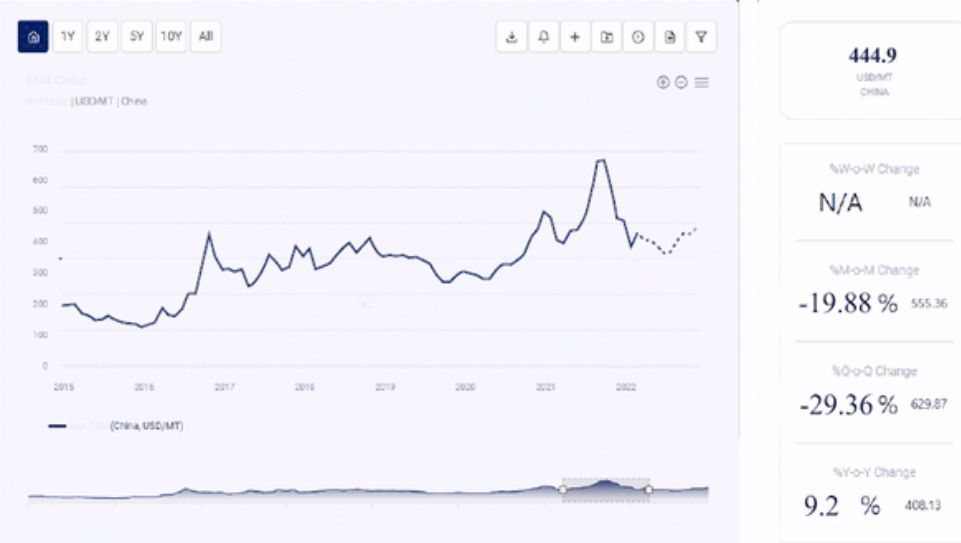The latest report titled “Rapeseed Production” by Procurement Resource, a global procurement research and consulting firm, provides an in-depth cost analysis of the production process of Rapeseed.
Procurement Resource study is based on the latest prices and other economic data available. It also offers additional analysis of the report with detailed breakdown of all cost components (capital investment details, production cost details, economics for another plant location, dynamic cost model). In addition, the report incorporates the production process with detailed process and material flow, capital investment, operating costs along with financial expenses and depreciation charges.
Request Free Sample - https://www.procurementresource.com/production-cost-report-store/rapeseed/request-sample
Procurement Resource’s detailed report describes the stepwise consumption of material and utilities along with a detailed process flow diagram. Furthermore, the study assesses the latest developments within the industry that might influence Rapeseed production cost, looking into capacity expansions, plant turnarounds, mergers, acquisitions, and investments.
Procurement Resource Assessment of Rapeseed Production Process:
- From Agricultural Methods: This report presents the detailed production methodology and cost analysis of Rapeseed industrial production across Rapeseed manufacturing plants. Rapeseeds are derived from the canola or rape plant and are typically planted before winter, as these plants are sensitive to low temperatures. After flowering, it takes approximately 25 to 45 days for the rapeseed pods to transition to a yellow color. Harvesting is done at this stage to prevent pod opening and seed loss. These harvested seeds are then used in the production of various oils for commercial purposes.
Request Free Sample - https://www.procurementresource.com/cost-analysis/rapeseed-production-from-agricultural-process/requestsample
Product Definition:
Rapeseed, scientifically known as Brassica napus, is a bright-yellow flowering plant cultivated for various purposes. It is a versatile crop with multiple applications. Rapeseed primarily serves as a source of edible oil, known as canola oil, which is recognized for its heart-healthy properties due to its low saturated fat content. Additionally, rapeseed oil is used in biodiesel production, contributing to the renewable energy sector. The byproduct of rapeseed processing, known as rapeseed meal, is used as nutritious livestock feed. Rapeseed cultivation is valued for its adaptability to various climates and its role in crop rotation to enhance soil health.
Market Drivers:
Market drivers for rapeseed include its versatility as a crop. Rapeseed is used primarily for oil production, including canola oil, which is recognized for its heart-healthy properties. Additionally, rapeseed oil is used in biodiesel production, contributing to the renewable energy sector. The meal byproduct from rapeseed processing serves as valuable livestock feed. Rapeseed cultivation can also help in crop rotation, reducing the risk of soil diseases and pests in other crops. The growing demand for healthier cooking oils, biodiesel production, and sustainable agriculture practices drives the market for rapeseed. Furthermore, its adaptability to various climates further supports its cultivation worldwide.
Looking for an exhaustive and personalised report that could significantly substantiate your business?
Although Procurement Resource leaves no page unfurled in terms of the rigorous research for the commodities that make the heftiest base of your business, we incline more towards tailoring the reports per your specificities. All you need is one-to-one consulting with our seasoned consultants to comprehend the prime parameters you are looking to pin your research on.
Some of the common requests we receive from our clients include:
- Adapting the report to the country/region where you intend to establish your plant.
- Adjusting the manufacturing capacity of the plant according to your needs.
- Customizing machinery suppliers and costs to meet your requirements.
- Providing additional information to the existing scope based on your needs.
About Us:
Procurement Resource ensures that our clients remain at the vanguard of their industries by providing actionable procurement intelligence with the help of our expert analysts, researchers, and domain experts. Our team of highly seasoned analysts undertakes extensive research to provide our customers with the latest and up-to-date market reports, cost models, price analysis, benchmarking, and category insights, which aid in simplifying the procurement process for our clientele.
Procurement Resource work with a diverse range of procurement teams across industries to get real-time data and insights that can be effectively implemented by our customers. As a team of experts, we also track the prices and production costs of an extensive range of goods and commodities, thus, providing you with updated and reliable data.
We, at Procurement Resource, with the help of the latest and cutting-edge techniques in the industry, help our clients understand the supply chain, procurement, and industry climate so that they can form strategies that ensure their optimum growth.
Contact Us:
Company Name: Procurement Resource
Contact Person: Christeen Johnson
Email: sales@procurementresource.com
Toll Free Number: USA & Canada - Phone no: +1 307 363 1045 | UK - Phone no: +44 7537 132103 | Asia-Pacific (APAC) - Phone no: +91 1203185500
Address: 30 North Gould Street, Sheridan, WY 82801, USA







 Butanedioic acid (succinic acid) is utilized in several key industrial applications. It serves as a building block in the production of biodegradable plastics, polyesters, and resins, making it essential in the plastics industry. Additionally, it finds use as a food additive, flavor enhancer, and as a precursor for pharmaceuticals, lubricants, and specialty chemicals.
Butanedioic acid (succinic acid) is utilized in several key industrial applications. It serves as a building block in the production of biodegradable plastics, polyesters, and resins, making it essential in the plastics industry. Additionally, it finds use as a food additive, flavor enhancer, and as a precursor for pharmaceuticals, lubricants, and specialty chemicals.